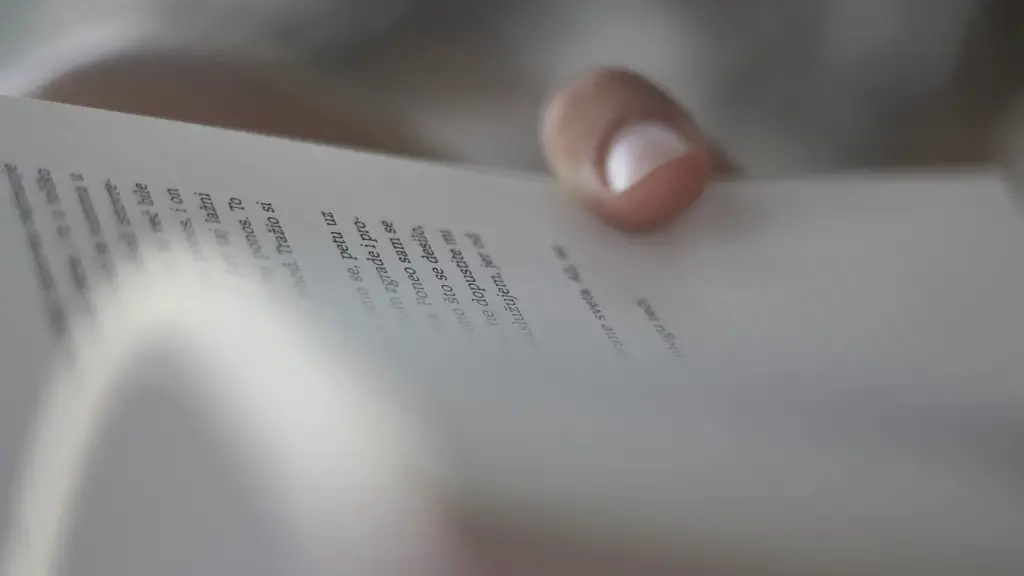One: Metaphors for Understanding Depth
Metaphors are an integral part of poetry, often used to explore depth and to convey emotion. To define the rhetorical device in its simplest form, a metaphor is a figure of speech that compares two unlike things, without using the word ‘like’ or ‘as.’ A metaphor can be a vivid way to engage and involve readers or audiences, stirring emotion and providing a powerful way to move people. Metaphors can help readers and listeners to better understand ideas and concepts, by painting a picture with words and creating a more physical experience of the story or narrative.
Metaphors can bring complexity to writing, allowing new associations, patterns, and images to flow in the communication process. metaphors provide a powerful way for conveying emotion to an audience. For example, a poet might use a metaphor to convey how a person is feeling by comparing him or her to a wilting flower or a burning sun. This can help people to understand a person’s emotional state without having to directly say the words.
In addition, metaphors can provide a vivid understanding of a concept, such as a metaphor to describe darkness as a “blanket of gloom”. Without having to explain in great detail the physical qualities of darkness, this metaphor provides an immediate and powerful image in the minds of the readers. Similarly, metaphors can be used to describe subtle and intricate ideas and concepts that might be difficult to verbally explain.
Two: Metaphors to Instill Reflection
Metaphors can be used to create deeper meaning and can allow readers to reflect more on the situation and the consequences of the speaker or protagonists. For example, a metaphor of death might be used in order to reflect on the life that has been lived or to provide a sense of closure to the narrative. A metaphor for life could be used to allow the readers to consider the path that the speaker has taken in their life or to contemplate their own choices.
The use of metaphor also allows for the recontextualisation of ideas or concepts, which can bring to light new ideas and fresh perspectives. Metaphors can open a reader’s horizon of thinking, engage them in reflecting on how their current understanding of a concept or situation can be challenged and expanded upon. Metaphors can make readers think beyond the literal and into the realm of what could have been or what could possibly be.
The use of metaphor can also help to bring a concept or situation to life in the mind of the reader, making them feel more connected to the story or narrative. Through metaphor, readers can connect on an emotional level, allowing them to internalise the story or narrative in a way which words alone could not do. Metaphors provide insight into an individual’s thought processes and ideas which can sometimes be difficult to explain.
Three: Metaphors for Alliteration
Alliteration is another important element of poetry, used to create a stronger emphasis on words or phrases. Metaphors can be used to create vivid imagery and can be used to add a sense of rhythm and cadence to a poem. This can create a lasting impression on readers, as the metaphor and rhythm will stay in their minds for some time. By creating strong imagery and rhythm, a poet or author can be sure that readers will remember what has been said and it will leave a lasting impression on them.
Metaphors allow a poet or author to explore their own thoughts, by painting a picture of their subject and allowing their audience to explore the deeper meaning. When a metaphor is able to capture the feeling and emotion of the speaker, it provides a deeper understanding of their thoughts and ideas. This can create a unique space, allowing readers to think more deeply and to reflect more on the meaning.
When used in conjunction with alliteration, metaphor can create a unique harmony in the poem. By combining the softness of flow with the power of a metaphor, a poet can create a poem that not only captures the mind of their readers, but also the heart.
Four: Metaphors for Bringing Together the Mind and the Body
Metaphors can be used to assist in connecting intellectual and physical understanding. Through the use of metaphor, readers can physically experience the concepts behind the poem or story. Metaphors can create a bridge between the physical and intellectual realms and create a vivid experience in the reader’s mind.
By using metaphors, a poet or author can bring out the physical qualities of a concept or situation, creating a physical experience for the reader. This can be particularly effective for those who have experienced an event first-hand, allowing them to relate more to the poem or story.
The physical experience of a poem can create a powerful wanting of the experience. Through metaphor, a poet or author can provide a vivid experience of their subject, making it easier for readers to yearn for the experience. By capturing readers’ attention and making them feel more connected to the poem, metaphors can help to create lasting memories that will continue with readers long after they close the book.
Five: Metaphor for Counter-Argument
Metaphors can be used to provide powerful counter-arguments, allowing a poet to effectively challenge a current understanding of a situation or concept. By providing vivid imagery of the issue, a poet or author can challenge the readers’ assumptions and force them to examine their own beliefs. Metaphors can be particularly effective for providing alternatives to a current situation, allowing readers to explore different aspects of the situation.
Metaphors can also be used to encourage readers to think more critically, questioning their current understanding of the subject matter and allowing them to think more outside the box. This can be particularly useful for readers who are already familiar with the topic, as metaphors can provide unexpected insights that can broaden their knowledge.
In addition, metaphors can be used to draw attention to a current issue and provoke readers to take action. By providing vivid imagery of a cause or a situation, metaphors can be used to encourage readers to act. By painting a vivid picture of the issue, metaphors can compel readers to take action and create change.
Six: Metaphors for Storytelling
Metaphors can be used to provide a story-like quality to the poem or narrative. By providing vivid imagery for readers to follow, the metaphor can bring together the story and create a more powerful experience. Readers can become more deeply connected to the story, as they are more able to imagine the scene or situation in their minds.
Metaphors can aid in developing plot, as they provide a means of traversing different plot points, allowing readers to flow more easily with the story. A metaphor can also help to provide tension, as the metaphor may provide a physical experience that can create a greater emotional response in the reader.
In addition, metaphors can be used to bridge different sections of the story together and to create a more powerful ending. By providing a visual metaphor at the conclusion of the poem, readers can be left with a lasting impression. This can also be used as a tool for reflection, as readers can contemplate the lasting image of the metaphor and how it relates to the story.
Seven: Metaphors for Emotional Spark
Metaphors can be used to provide emotional resonance and to ignite the emotions of readers. Metaphors can be used to instil and evoke emotion, allowing readers to feel the intensity of the emotions and to connect with the characters of the story. By providing vivid and powerful images, metaphors can make readers feel more connected to the story and to develop empathy for the characters.
Metaphors can also be used to stir up deeper emotional responses, as some metaphors can bring up new emotions and thoughts that readers weren’t expecting. By creating unexpected emotions and situations, metaphors can provoke thought and reflection in the reader, and can instil a sense of purpose in the narrative.
Through metaphor, readers can feel more connected to the characters and the story. This can make readers think more deeply about their own lives and the situations they are in. Metaphors can create a powerful emotional spark, offering an experience that words alone could not do.

